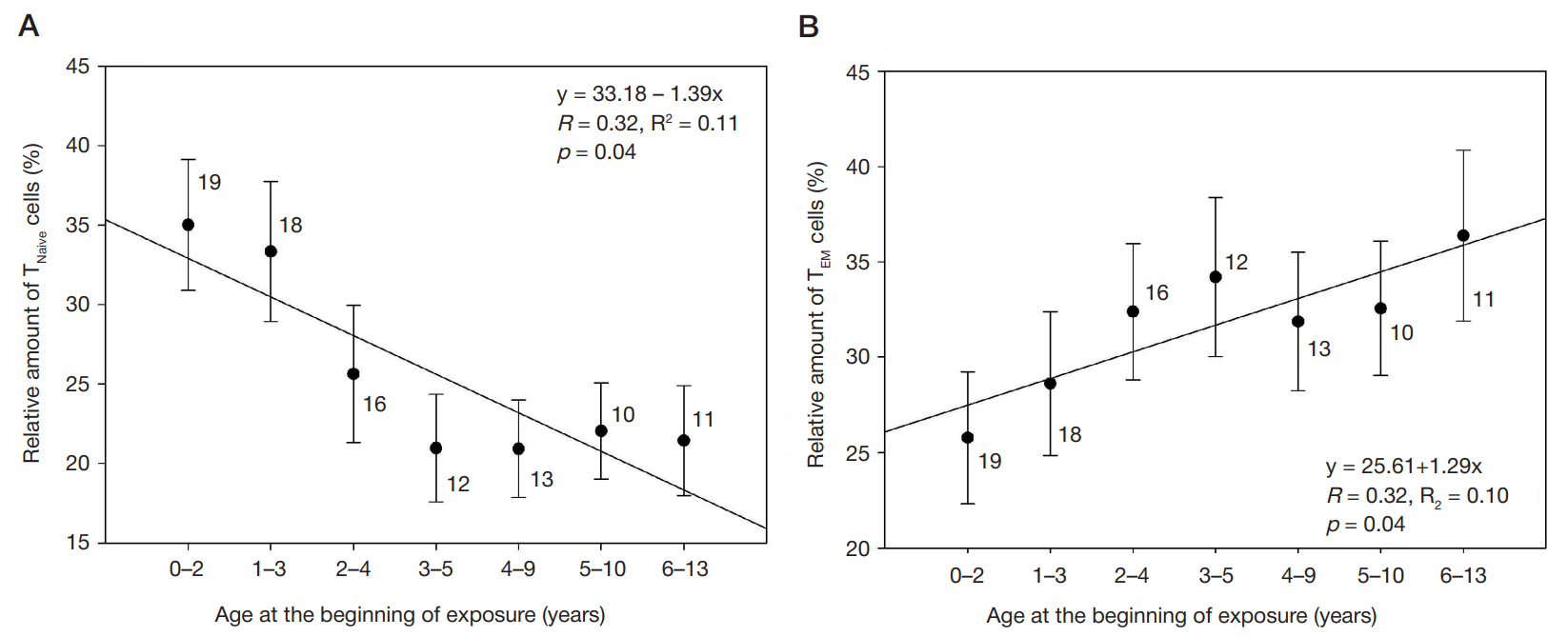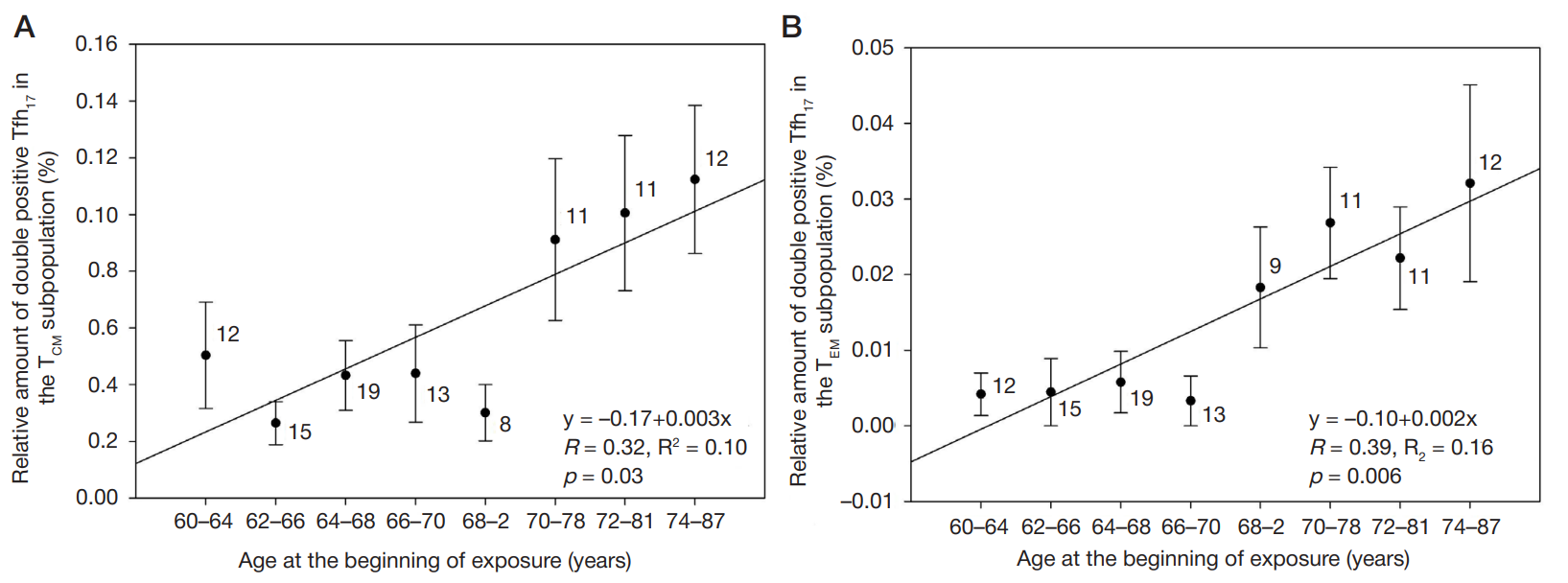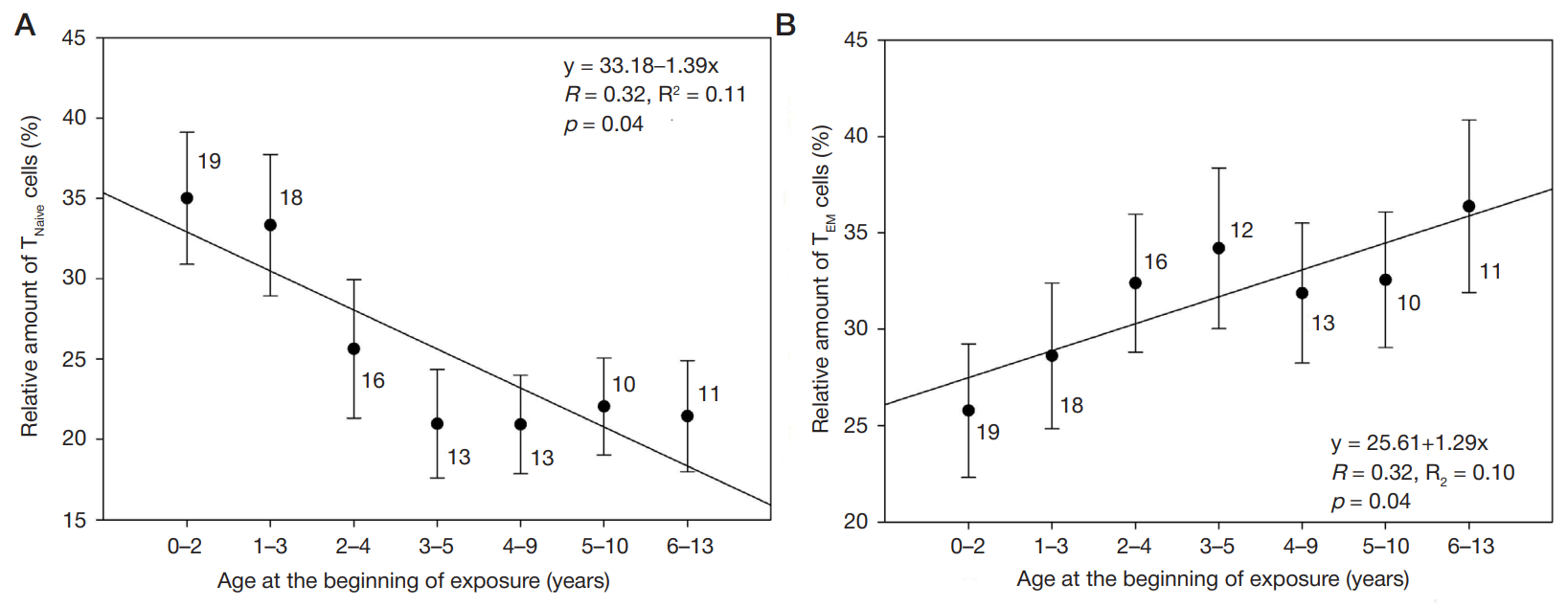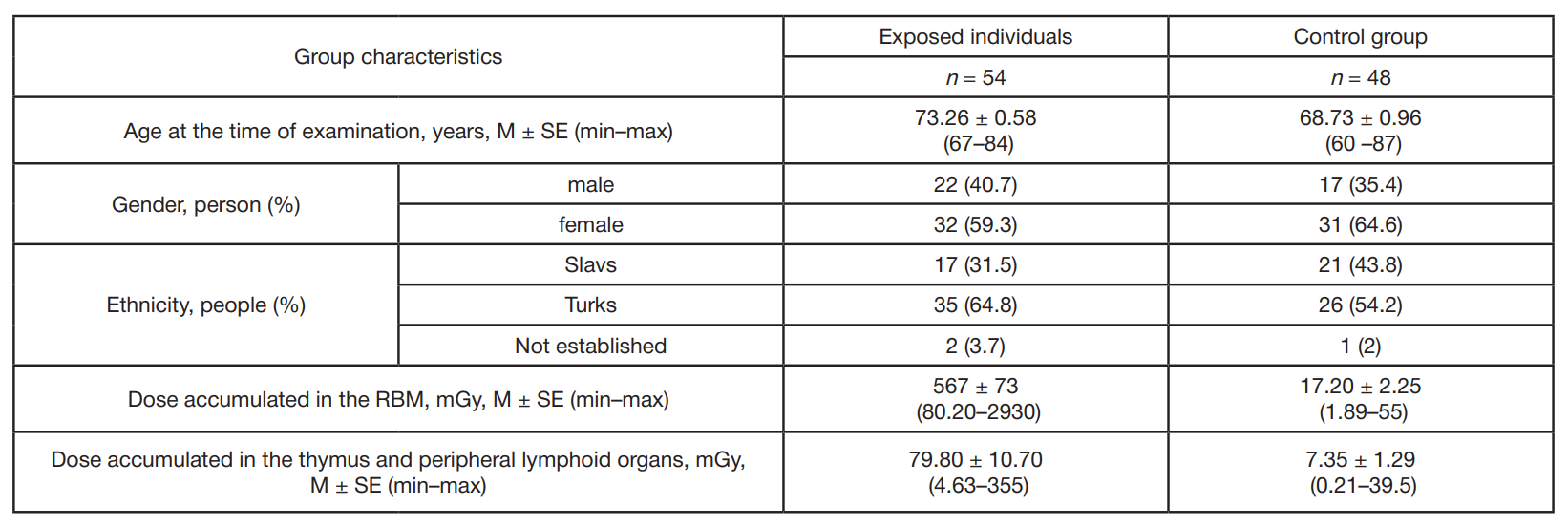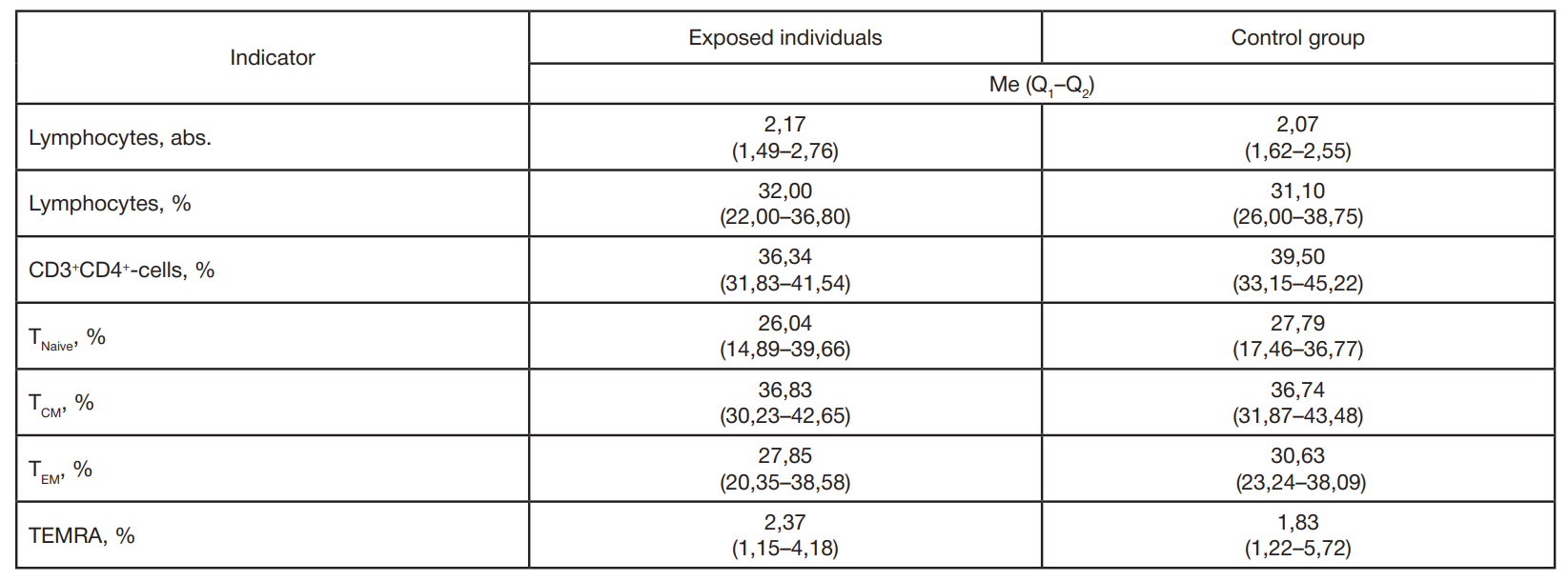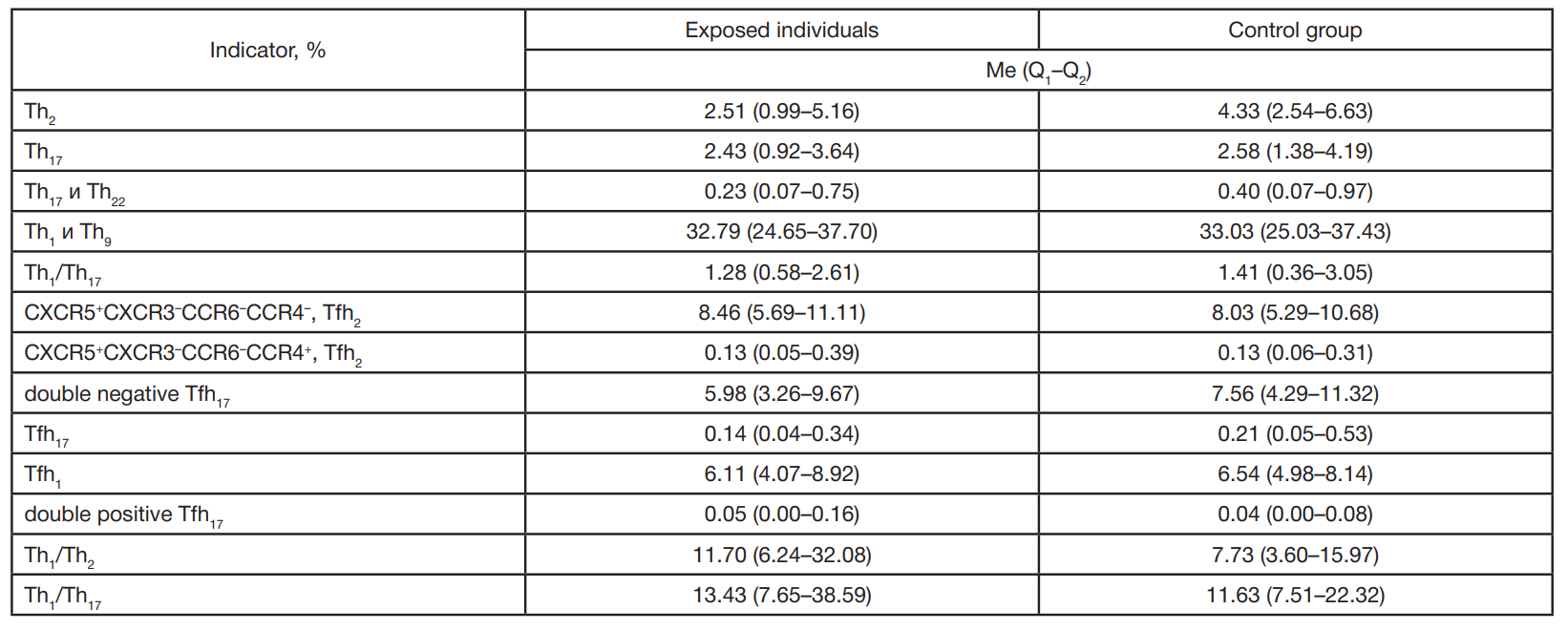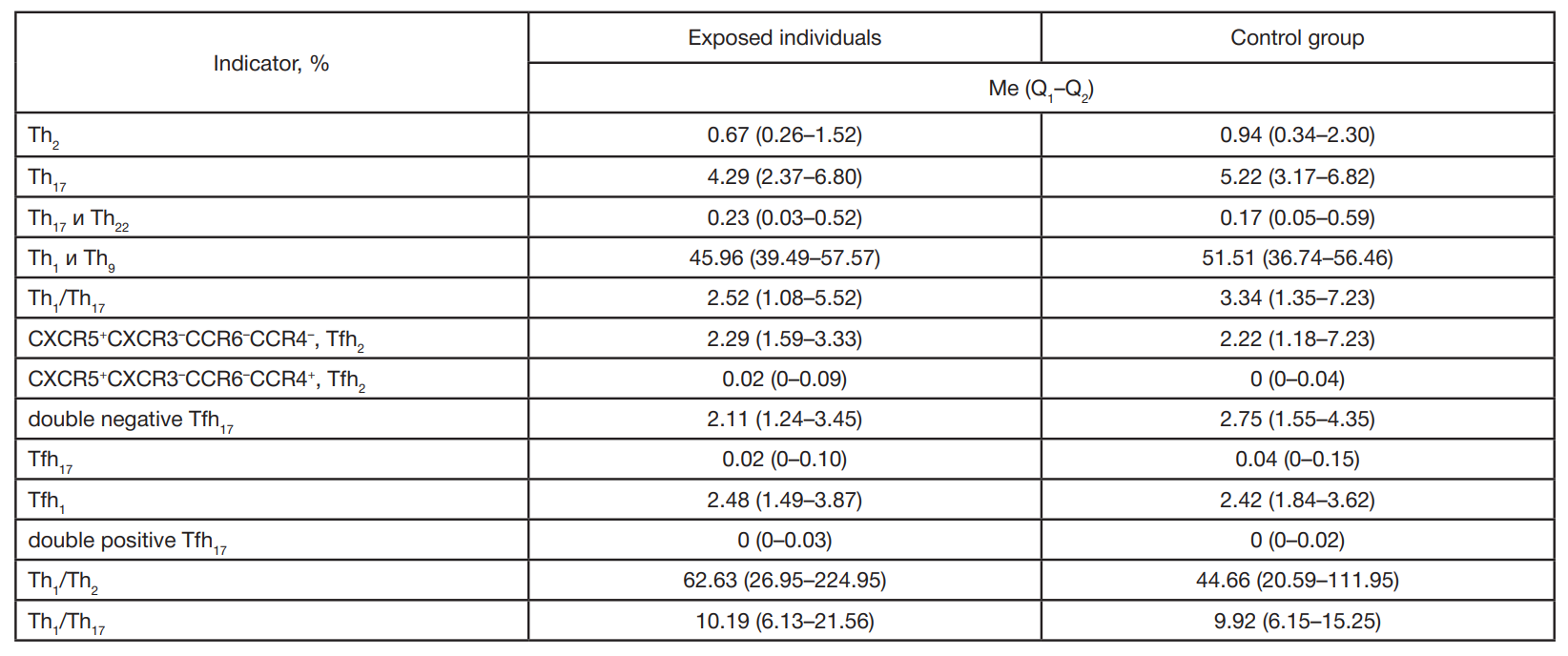
This article is an open access article distributed under the terms and conditions of the Creative Commons Attribution license (CC BY).
ORIGINAL RESEARCH
Subpopulation composition of T-helpers in the peripheral blood of persons chronically exposed to radiation in the long term
1 Ural Research Center for Radiation Medicine, Chelyabinsk, Russia
2 Chelyabinsk State University, Chelyabinsk, Russia
Correspondence should be addressed: Alisa I. Kotikova
Vorovskogo, 68, str. A, Chelyabinsk, 454141, Russia; moc.liamg@asilaavokitok
Funding: the work was carried out as part of the "State of human cellular immunity against manifestation of the long-term effects of chronic exposure to radiation" State Task (code 27.002.20.800).
Author contribution: Kotikova AI — methodology development, laboratory research, statistical processing, article authoring; Blinova EA — methodology development, article authoring; Akleyev AV — development of the research concept, scientific supervision, article authoring.
Compliance with ethical standards: the study was approved by the Ethics Committee of the Urals Research Center for Radiation Medicine (Minutes #1 of April 14, 2022). All participants signed a voluntary informed consent to participate in the study.
